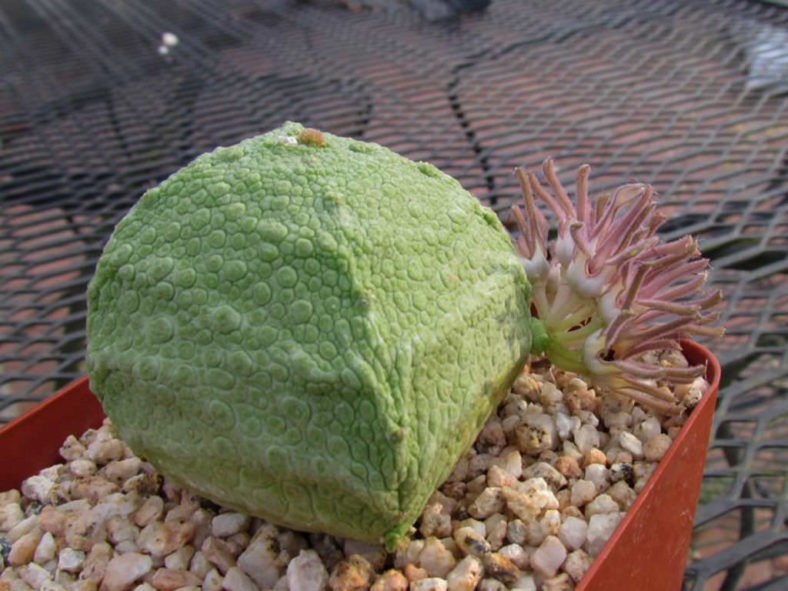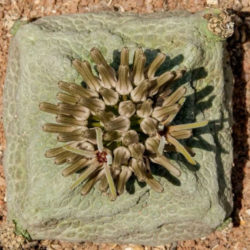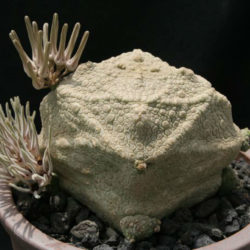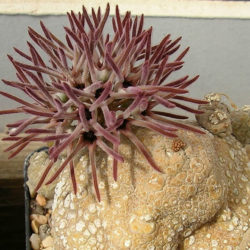Scientific Name
Pseudolithos cubiformis (P.R.O. Bally) P.R.O. Bally
Common Name(s)
Cube Pseudolithos, Cube-shaped Pseudolithos
Synonym(s)
Ceropegia cubiformis, Lithocaulon cubiforme
Scientific Classification
Family: Apocynaceae
Subfamily: Asclepiadoideae
Genus: Pseudolithos
Description
Pseudolithos cubiformis is an odd succulent with a leafless, usually solitary stem that varies in shape from semi-spherical and spherical to often almost perfect cube. The stem can grow up to 4.8 inches (12 cm) tall and wide, becoming knobbly with age. The color of the stem varies from light green to gray-green and reddish-brown.
During the late summer, the plant produces clusters of flowers with a white to pale green corolla tube and reddish-brown, dark red, or maroon corolla lobes with short, tufted, hair-like appendages at the tips. The flowers of this species are the largest in the genus. The fruits are twin follicles that can reach up to 3.2 inches (8 cm) in length.
Origin
Pseudolithos cubiformis is native to the northeastern Somalia.

Hardiness
USDA hardiness zone 11a to 11b: from 40 °F (+4.4 °C) to 50 °F (+10 °C).
How to Grow and Care
Stapeliads are relatively easy to grow. However, they should be treated as outdoor plants as they will easily rot indoors and cannot flower without exposure to outdoor temperature fluctuations. They should be grown under cover so that watering can be controlled. They require a reasonable amount of sunlight to promote flowering and maintain a well-shaped plant. Very shady positions will produce very poor flowering. Stapeliads come from climates where they survive extremely high temperatures in the summer months, so most growth is in spring and fall, with flowering in fall when the weather starts to cool down. In the growing season, water is in moderation when needed, ensuring the soil is pretty dried out between waterings. Do not water between November 1 and March 1. Fertilize lightly, if at all, to prevent overly lush and weak stems.
The easiest and best way to propagate Stapeliads is from stem cuttings, which can be taken virtually throughout the year. Seed is also a method of propagation.
See more at How to Grow and Care for Stapeliads.
Links
- Back to genus Pseudolithos
- Succupedia: Browse succulents by Scientific Name, Common Name, Genus, Family, USDA Hardiness Zone, Origin, or cacti by Genus
Photo Gallery
Click on a photo to see a larger version.


